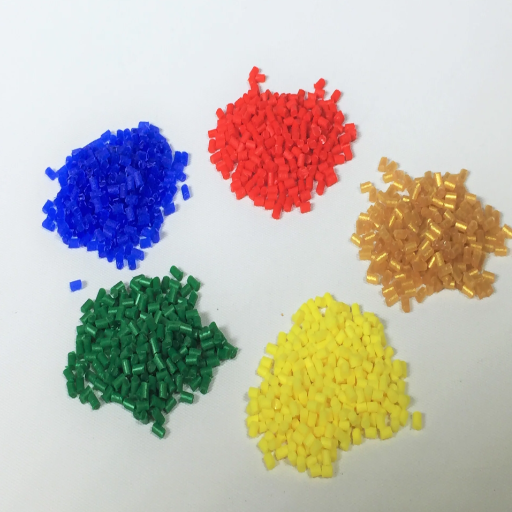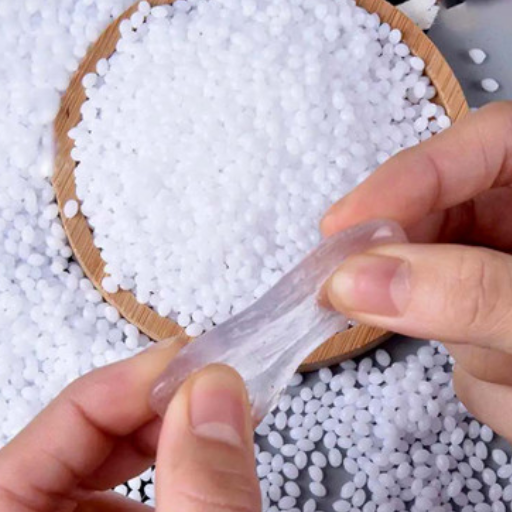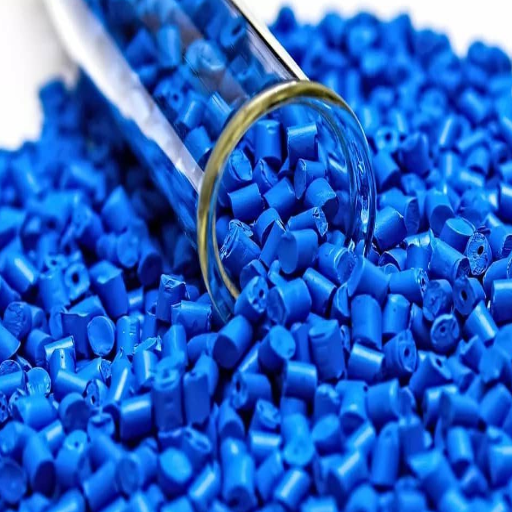Plastics are a key part of many sectors and daily activities, with polyethylene terephthalate (PET) and polypropylene (PP) among the most popular polymers. The materials mentioned above have special properties that make them ideal for packaging, textiles, automotive parts, etc. To choose the right material, it is important to know the broad differences between PET and PP. Therefore, this article will focus on their physical properties, chemical structures, environmental effects, and typical uses to enhance knowledge coverage and provide useful general guidance to professionals in the field, manufacturers, and consumers.
What are PET and PP plastics, and how are they different?
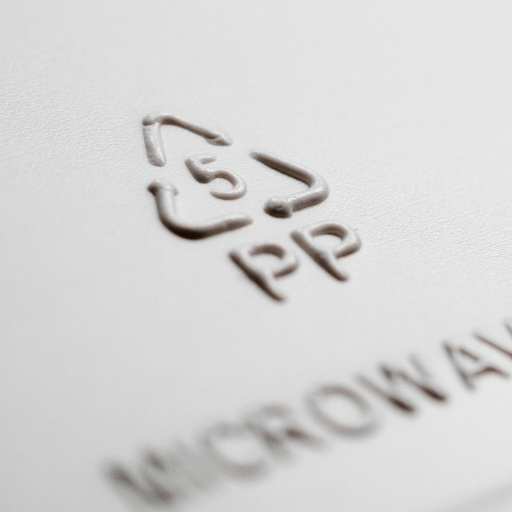
Polyethylene Terephthalate (PET) and Polypropylene (PP) are among the most common thermoplastic materials, each with different aspects. For instance, Polyethylene Terephthalate (PET) is a polymer comprising polyesters with high sufficiency, clarity, and resistance thus, making it ideal for utilization in the food sector, particularly in the manufacturing of beverage bottles as well as textile fibers. Conversely, Polypropylene (PP) is a polyolefin that exhibits low density, chemical inertness, and low moisture uptake and hence finds applications in the production of bagging & wrap films, parts for automobiles, as well as kitchenware. Their differences stem primarily from their molecular architecture, where it is clear PET is more rigid and more resistant to heat than polypropylene while the latter is more flexible and less expensive for uses that need low power and heat.
Chemical composition and structure of PET and PP
Polyethylene Terephthalate (PET), a condensation polymer, can be scribed from Ethylene glycol, and terephthalic acid chemically, with its monomers joining together in a linear order to create a polymer with high tensile strength and thermal stability. Its chemical notation can be described as (C10H8O4)n, while its melting point is usually around 250 degrees Celsius. Such a semi-crystalline structure permits polyethylene terephthalate (PET) to be multiresistant, particularly in the case of carbon dioxide and oxygen gases, rendering it vastly useful in packaging.
PP, on the other hand, is constituted by the polymerization of propylene monomers, thereby forming a hydrocarbon backbone (C3H6)n. The melting point encompasses a temperature range of 130–171°C, which is less than the temperatures for the melting of PET. The isotactic arrangement of PP chains provides good chemical resistance and flexibility, while the average density is around 0.90 g/cm³, minimizing material volume and costs. The two polymers possess different features concerning the molecular configuration PET being aromatic and PP being aliphatic, these structural differences directly affect their mechanical and thermal properties.
Main characteristics and properties of PET and PP
PET (Polyethylene Terephthalate) has a high tensile strength that ranges from approximately 55 to 75 MPa, dimensional stability as well as good gas permeability barrier, especially to oxygen and carbon dioxide. These features are because its semi-crystalline material has a high thermal resistance, making it beneficial for application in beverage bottles and food containers. The density of PET ranges around 1.38–1.40 g/cm³, whereas the glass transition temperature is in the region of 70–80 °C, allowing for mechanical strength to be conserved over a wide range of temperatures.
It is possible to produce low-cost, lightweight materials, which are considered to be quite useful in the production of PP, with the lowest density of all the other plastics available in the current market at 0.90 g/cm³. PP can withstand temperatures between 130 and 171°C and has also shown resistance to chemical interactions, particularly with acids and bases. As a result of its highly organized molecular chains and the isotactic configuration, PP can withstand between 25 MPa and 40 MPa of tension stress and possess a good degree of flexibility. Therefore automotive, textiles and film packaging are few of the many uses PP is able to fulfill, hence its robust mechanical thermal and chemical properties allow it to excel in many industries.
PET and PP common usage and applications
PP and PET are known to produce textiles and clothing, even fibers and pound containment for weaves and non-weaves fibers; PP, with its properties, is able to serve PP when making such items.It has been found that PP has ended up being the conclusion for making a wide range of textiles and soft fibers, and PP has shown strong composed abilities, meaning there is a space of opportunity for application in battery cases, micrometric films, and microwave core use materials. Another area that may eventually outperform many other areas would be tape and other specialized films. All said and done, There really is no end to the possibilities. This is all thanks to PET coupled with PP.
How do PET and PP compare in terms of durability and strength?
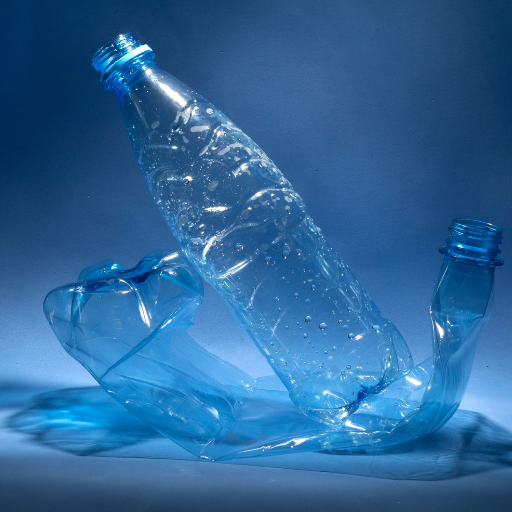
As a result, PET is usually more advantageous because its tensile strength is generally greater than that of PP, making it preferable in several mold applications that require hard and strong materials. PET is strongly durable as it neither breaks apart under stress nor loses shape with time. Contrarily, PP is the most flexible of olefins and has tremendous impact resistance, enabling it to withstand a great deal of pressure and not shatter or break off. While PP has the most potential against chemicals and can withstand the wearing effects of everyday use, PET is more temperature resistant and is more stable about prolonged effects from the environment. These two materials have their strengths when it comes to strength or toughness, as PET, which is suitable in areas requiring rigidity and strength, especially where weight is applied, and PP provides flexibility and sturdiness in the case where this is required.
Tensile strength and impact resistance of PET vs PP
Although PET has greater tensile strength when contrasted to the PP material, with PP being between 30-40 MPa, when compared to PET 55-75 MPa, this indicates that PET can exhibit applications that require rigidity and the exertion of loads without deformation. However, in terms of tension or impact resistance, PP does better due to its flexibility and ductile nature, which allows it to sway or move without breaking and absorb massive energy. PP is also high in strength. While PET is more rigid, it can withstand impact forces to a certain extent; however, it is inefficient at distributing these forces and can begin to crack due to fast or repeated forces. These qualities make PET more appealing for use in structural strength and high-temperature applications, while PP is preferable in applications that require high elasticity and toughness under stress.
Comparison of Heat Resistance and Chemical Resistance
As noted by glass transition temperature (Tg), PET is more heat resistant than PP, as Tg for PET occurs in the range of 70-80°C against -10°C for PP; the melting point for PET is about 250°C, whereas for PP it is 160°C. This implies that PET could be used for more applications requiring higher temperatures and greater dimensional and structural stability. On the other hand, although PP has fewer thermal resistance characteristics, it copes efficiently at temperatures of about 100-120°C in some mixtures, thus making it useful for moderate thermal applications.
On the chemical resistance aspect, PP has a larger tolerance towards acids, bases, and some organic solvents, exhibiting excellent durability even in highly chemically active environments. PET, on the other hand, is able to endure water, alcohol, and some oils; however, PET is able to last against high alkalis and strong concentrated acids, which would lead to hydrolysis and eventually degradation. This distinction highlights the suitability of PP for containers, pipes, and systems exposed to aggressive agents, whereas PET’s structural components are ideal for thermal and structural applications.
Long-term durability and performance in various applications
The long term performance of PET and PP relies on their respective material characteristics in conjunction with the ambience they are placed in. Due to its initial highest tensile strength and increased stability, PET is suitable for load-bearing structures and even sites that are continually exposed to a significant amount of pressure for prolonged periods. However, its life expectancy may reduce in certain situations due to thermophilic conditions due to its hydrolysis susceptibility. Whereas PP has a much better life expectancy as it can combat environmental conditions such as UV radiation where it is treated with adequate stabilizing additives, thanks to its ability to withstand considerable physical force attributes being consistent outdoors or in chemical-infused places. Other than automotive systems and structures where consistent chemical exposure permeates, PP is most suitable for exposing areas where resiliency is required, on the flip side however, over extended periods of use, PET can sustain positions where durability and physical stability is needed. With adequate proportions and blends, both the materials regarding their designated tasks can deliver impressive long term performance.
Which plastic is better for food packaging: PET or PP?
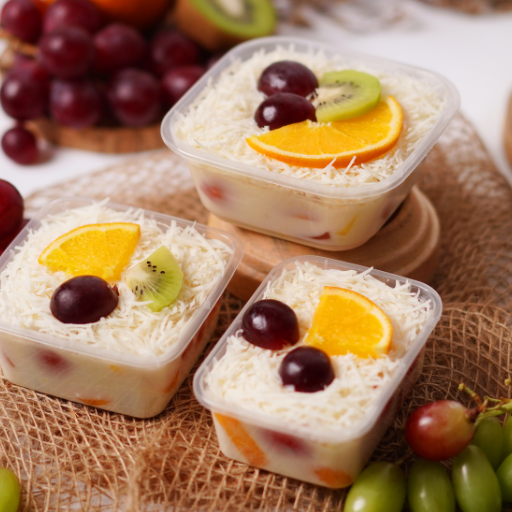
One needs to consider whether PET or PP is better suited for food packaging. Such considerations may include container performance, material cost, and recyclability. For instance, although PET is commonly used for food packaging because of its excellent properties, including strength, transparency, and moisture barrier, which aids in retaining the quality and freshness of food, PP is also a good alternative when packaging food, particularly for applications that require microwaveable containers. On the contrary, PP provides good resistance to cracking under stress and is chemical resistant, thus meeting some special packaging needs. Ultimately, the final decision boils down to the specific nature of the food product and the packaging to be utilized. PP and PET have different strengths and flexibility features, hence the need to understand the applications one wishes to fulfill with the assistance of the two materials.
Barrier properties and suitability for food contact
When evaluating barrier properties concerning food contact, PET surfaces have better ideal properties such as oxygen and carbon dioxide permeability. Such qualities render these polymers extremely suitable for enhancing the shelf life of perishable items, especially beverages and even carbonated drinks. Theoretically, the oxygen transmission rate (OTR) for PET is about 0.04-0.05 cc-mil/100 in²/day at a temperature of 23° C, and its carbon dioxide barrier is also beneficial in some contexts relative to PP. Furthermore, PET is used in manufacturing food containers owing to its FDA approval with no toxicity, thus promoting safety, while its useful properties combine minimal leaching of chemicals into food.
PP, in comparison, is used in the production of polymers due to its low density, which effectively results in a more lightweight packing but with lower moisture resistance. The material’s Oxygen Transmission Rate (OTR) is expected to range between 1.0 and 1.2 cc-mil/100 in²/day at 23°C. This rate is higher than that of PET, indicating it is less effective for highly sensitive products to oxygen exposure. There is a notable advantage of using PP polymers since they can withstand high temperatures of between 120-130° C. This arguably makes them ideal for hot fill and microwave-safe jars. Globally, both materials have been approved for contact with food, but PET’s strength, clarity, and another major factor, dust impermeability, make it the ideal product for a wide range of food products that require a longer duration of freshness.
Effectiveness in various food packaging applications
- Beverage Packaging: PET is widely used for packaging soft drinks due to its excellent gas barrier properties, low weight, and clarity, which help preserve the drinks. Although less streamlined, it is known to be efficient for water bottles and hot water mugs due to its heat resistance.
- Dairy Products: PP is used in data warehousing due to its durability, while PET is increasingly being adopted in yogurt drinks and dairy drinks due to its capability of optimizing product appeal and extending shelf life by prolonging exposure to oxygen.
- Microwavable Meals: Microwaving and reheating on the stovetop are recommended because PP has low thermal conductivity and will not form any plastic straws, helping keep the food box intact during the heated process.
- Snacks and Dry Goods: Good visibility and ventilation appear to be required features when packaging, making PET ideal for sand packaging given its rigidity. When weight is a consideration, PP performs well in chips and mugs but is more commonly used in diners.
- Sauces and Condiments: Plastic bottles made of PET are good for sauces because they are resistant to most chemicals, and therefore, the plastic does not interact with the sauce, whether it is acidic or oily. PP comes into play, but that is only for flexible squeeze bottles, which have less protection but are more flexible.
- Frozen Foods: Both PET and PP are used for frozen foods, but PP has the upper hand when it comes to withstand temperature changes. Containers made from PET perform better as barriers to oxygen and moisture, keeping the product longer on the shelf.
Safety considerations for the use of PET and PP in food storage containers
Regarding food-grade PET and PP, I pay close attention to their chemical stability and regulatory status. According to the available literature concerning safety perceptions, PET is considered safe since it has a high degree of leaching compliance, with little food and/or beverage contact even when subject to warming. Likewise, there is no reason to be concerned about PP in the microwave as it is thermally stable and does not emit any harmful by-products. Many substances are sanctioned for use by prominent regulatory authorities when contacting food, provided they are utilized appropriately. The opposite would be detrimental, ameliorating the conditions in which the materials can be used, such as increasing the heat beyond what the material is rated for.
How do PET and PP differ in terms of recycling and eco-friendliness?
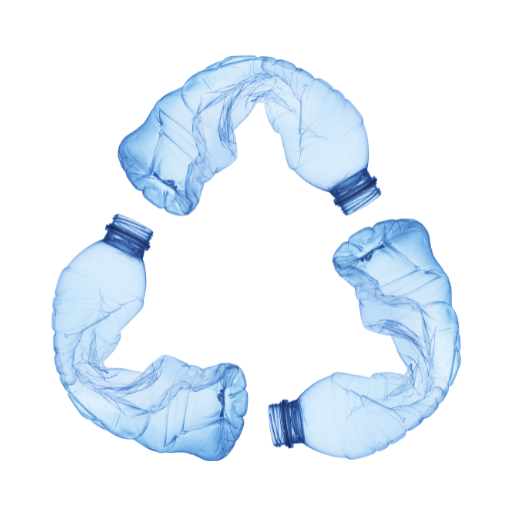
PET and PP differ significantly in their recycling processes and environmental impact. PET is widely recycled due to its clear labeling and established infrastructure, making it a highly recoverable material for reuse in products like fibers for textiles or new containers. Its ability to be recycled repeatedly without significant degradation in quality adds to its eco-friendliness. On the other hand, PP recycling is less prevalent because of challenges in sorting and fewer recycling facilities accepting it. While PP can be repurposed into items like automotive parts or composite materials, its recycling rate remains relatively low compared to PET. Furthermore, PET is more energy-efficient to recycle, whereas PP often requires higher processing temperatures, increasing its environmental footprint.
Recyclability and recycling of PET and PP
The PET polymers perceive recyclability mainly because they can be disassembled and reassembled multiple times. An average PET bottle is first collected, cleaned in a hot detergent solution, then mechanically recycled into flakes or pellets. Those are then melted and remolded into new materials for products such as packaging or fabric. Perhaps what is most compelling about recycled PET materials is their remarkable ability to retain functionality through numerous recycling cycles, making them ideal for closed-loop systems. The temperature typically used for the recycling of PET varies between 475°F to 525°F (246°C to 274°C), which might be considered moderate temperature when compared to that of other plastics.
In the case of PP, however, a semi-crystalline structure coupled with separation difficulty from mixed waste streams makes PP recycling an unrealistic expectation. Its recycling similarly takes place, including collection and cleaning followed by re-granulation; however, the lower recycling rates are due to inadequate facilities to cope with PP. Furthermore, its melting point ranges from 320°F to 340°F (160°C – 171°C), which poses higher energy requirements and thus makes it expensive to process. Although recycled PP can be used in construction products and components for cars, the processes for recycling PP are less advanced than those of PET.
Each of these materials has the possibility of being recycled and hence has the potential of being less harmful to the environment; however, due to the greater focus on PET’s recycling and its competitiveness and efficiency, it is more eco-friendly than other materials.
Environmental impact of PET vs PP production and disposal
It has been established that the carbon emissions and CO2 emissions during the production of PP are significantly lower than that of PET and that PP is less harmful for the environment as its manufacturing process requires less energy. This is due to PET being synthesized from polymerized ethylene glycol and terephthalic acid, which, having said, would take an elevated temperature and pressure around 70 to 90 atm. PET production is required to support this data of about 80 to 85 MJ/kg. Meanwhile, 70 to 75 MJ/kg is required to produce PP, which, as a result, is not only cheaper but less harmful to the environment overall.
Considering PET is largely unfazed by degradation while being extremely durable, it can lead to the accumulation of plastic waste in many environments, which is why recycling is mandatory. However, emphasis should be placed on the chemical structure of PET as it is less complicated than that of PP, allowing it to be recycled more. Lastly, its low production cost and energy requirements can lead to high levels of microplastic pollution as there is a lack of sustainable recycling methods available.
Also, both PP and PET undergo combustion during the disposal stage. As a result, both materials discharge carbon dioxide and other emissions. Still, PP has a better energy recovery rate of approximately 46 MJ per kg as opposed to PET energy recovery, which is about 23 MJ per kg. It helps identify the advantages of each of the three approaches in their respective end-of-life cycles and significantly underscores the need for improvement recycling technologies to minimize their impacts on the environment.
New advances in eco-friendly replacing materials for both plastics
New advances in eco-friendly replacing materials for PET and PP focus mainly on bio-based plastics and better recycling. For example, polylactic acid (PLA), which is produced from corn starch renewable resource, has biodegradable characteristics, although the performance of the corn starch depends on particular composting environments. Improving chemically recycled polymers is also on the way to improving the recovery rate of post-consumer PET and PP waste. In addition, work is aimed at developing microbial enzyme technologies that can degrade conventional plastics into recyclable monomers, therefore it will be possible to ensure the closed cycle of plastic rotation.
How do PET and PP perform in extreme temperatures?
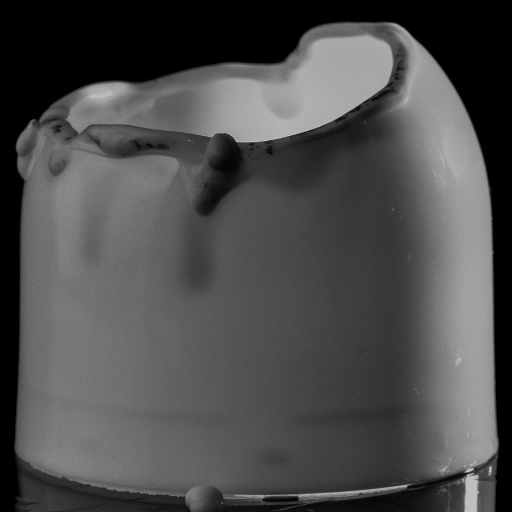
Polyethylene terephthalate (PET) has good cold stability and moderate temperatures, but when the temperature rises beyond 250°F (approximately 120°C), This material becomes soft and deforms. As a result, sub zero temperatures make PET less viable in terms of strength. Polypropylene (PP), on the other hand, has much better properties as it can withstand temperatures reaching around 320°F (160°C) without deformations. However, PP does tend to become brittle at zero degrees Celsius, which makes it lose functionality at low temperatures. Overall, when it comes to choosing the appropriate material for a task, both are chosen depending on the heat characteristics of the end purpose.
How do the melting points and heat resistance of PET and PP compare?
PET and polypropylene (PP) have clear differences in their melting points and heat characteristics, which greatly influence your use. PET has a melting point ranging from 482°F to 572°F (250°C to 300°C), which makes it able to sustain structural integrity at high temperatures. Still, on the opposite end, it limits such environments of extreme heat stability. On the contrary, PP has a higher melting temperature of 320F (160C), which ultimately decreases its heat resistance due to its exposure to a higher melting point.
In the case of compressed PP, it is believed that PP exhibits its melting point to be slightly lower than PP, indicating the material’s permeability, but in the case of manufacturing heavy containers, greater delicacy is needed PET has a higher dimensional and thermal stability to heat as PP tends to warp PP is weak against high heat. Whether it is PP or PET, they are both used for containers but this depends on the tolerances needing enforcement when in contact with heat, whereas PP is recommended for low heat, PET will need to be used around hot fill due to, the fact that PP can.
Performance in low temperatures and material brittleness
At low temperatures, PP emerges as more effective than PET allowing greater flexibility along with a better impact resistance. The brittle point for PP is around -20 degrees Celsius, which means that it can withstand temperatures up to -20 degrees Celsius with minimal damage to its structure. On the other hand, PET starts losing brittleness at around -10 degrees, which makes PP less suitable for colder places. Such properties make PP useful for packaging items that have to be stored in cold storage or frequently frozen items since that has a high mechanical strength. It is essential to consider the environmental aspects and the working conditions if the material being sourced is expected to be thermally resilient for the intended purpose.
Applicability of very Low and High temperature use.
- Application of High Temperatures
Polypropylene (PP) is made of polymer degradation of thioether, which can still be employed for different tasks that require application at the maximum limit of 100 ℃. This allows integration in areas such as microwave-safe items or hot liquids. PET is prepared of crude Polyethylene Terephthalate which can also resist heat but up to 150 degrees C max; it works exceptionally well in basic tensioned items such as heated beverages containers or PP oven trays.
- Application of Very Low Temperatures
PP can be applied at -20 ℃, making it a good candidate for frozen foods or foods that need preservation under cryogenic temperatures. PET can do PP at -10 ℃, which does resistance sorting to an extent in cryogenic states but is not as effective as PP. PET’s tendency to undergo such basic tensioning means storage or moderate reaping temperatures are its cutting-edge applications. However, these attributes should be evaluated inch by inch against operational goals and tasks.
Which industries primarily use PET and PP plastics?
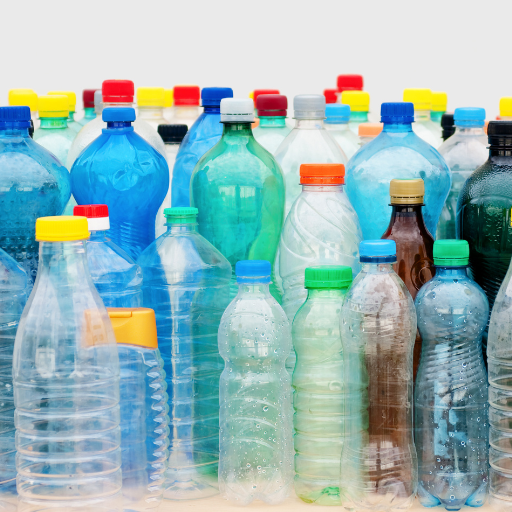
Industries increasingly use PET and PP due to their broad range of uses and adaptability. As a result of its clarity, durability, and ability to prevent the penetration of moisture and oxygen, it has been largely utilized in the food and beverage sector by manufacturers of containers such as bottles and packaging. APP is also produced and used in the textile and apparel industry as polyester fibers used in clothing, upholstery, and industrial fabrics. Conversely, the manufacturing of food containers, caps, and films has predominantly seen leveraged use of PP. The need for moisture and chemical resistance in such products makes a robust case for PP use. Furthermore, the auto industry heavily depends on PP to manufacture lightweight parts and the medical industry to make syringes and laboratory-grade instruments.
PET applications in beverage bottles and textiles
- Beverage Bottles: PET bottles are widely used in the bottle industry, especially for beverages. This use can be attributed to their light weight, great strength, and resins’ ability to easily prevent the penetration of oxygen in bottled products such as sodas and carbonated water, thus enhancing preservation. Moreover, PET can be reused and converted into other products or even new bottles, which makes its use in packaging more environmentally friendly.
- Textiles: PET is a base polymer used to produce polyester fibers, which are stout, crease-resistant, and have moisture-absorbing characteristics. Such fibers find application in clothing, particularly activewear, outerwear, and household goods such as curtains and upholstery. The non-shrink and non-stretch features of PET also ensure that the fabrics last long and are economical, thus making it a sought-after polymer in the clothing genre.
PP uses in automotive parts and consumer goods
- Automotive Parts: Polypropylene (PP) is now amongst the most extensively used plastics in the automotive sector because of its low weight, high strength, and ability to withstand high stresses and impacts. It is commonly used in bumpers, dashboards, door panels, and other places where low weight and rigidity are needed to improve the vehicle’s and fuel economy. Furthermore, as PP has excellent chemical resistance, it is also used in battery casings and fluid reservoirs.
- Consumer Goods: PP emerges as a significant component in manufacturing consumables such as food packaging, food containers, and even reusable crockery. Owing to its high thermal resistance and moisture barrier, PP molds well into concepts of food-safe applications. Stationery, toys, and furniture are just a few of the numerous items that rely on PP’s strength. This versatility across so many different product classes certainly emphasizes the importance of PP in the modern-day consumer goods industry.
Emerging applications for both plastics in various sectors
- Healthcare and Biomedical Applications
Because of their adaptability and durability, but most importantly, because they are sterile, plastics have started being adopted at an increased rate in the healthcare sector. Polymers are advanced and used in fields such as prosthetics, surgical instruments, and drug delivery. For example, temporary implants and absorbable sutures rely heavily on biodegradable plastics.
- Automotive and Transportation
Lightweight and strong plastics are necessary for the production of more energy-efficient vehicles. To save weight and achieve more efficiency, plastics are slowly being incorporated into car exteriors, interiors, and structural parts. High-performance plastics also help develop energy-efficient electric vehicles and even self-driving transports.
- Construction and Infrastructure
Sustainable construction heavily relies on plastics, particularly those used in weatherproof piping, insulation, and lightweight composite materials for wall panels. Evolving polymer technologies increase longevity in urban development projects such as bridges and roads.
- Electronics and Technology
PCBs, connectors, and casings are all made with plastics, as they are lightweight and heat-resistant components. Advancements like wearable technologies and flexible displays also rely on flexible and conductive polymers.
- Packaging and Sustainability
Biodegradable and recyclable plastics are being used on a large scale in the packaging industry to help combat the pollution left by plastic waste. Another technology includes smart packaging systems that use advanced plastics and have integrated sensors to help with food safety and quality.
- Aerospace and Defense
Aerospace has been undergoing a transformation, with new-age plastics taking the place of metals, especially due to their lightweight and high-temperature resistance properties. These materials have become useful in aircraft interiors, structural components, and military gear for performance and reduced fuel usage.
- Energy and Renewables
Plastics are the backbone of Renewable energy tech. They are crucial in the making of solar panels, wind turbine blades, and energy storage. Additionally, plastics are corrosion-resistant and durable, making them perfect for long-term energy solutions.
Reference sources
Frequently Asked Questions (FAQs)
Q: What are the main differences between PET and PP plastic?
A: PET (polyethylene terephthalate) and PP (polypropylene) are both popular thermoplastic polymers, but they have distinct properties. PET is known for its excellent clarity, strength, and barrier properties, making it ideal for beverage bottles. PP, on the other hand, is known for its flexibility, chemical resistance, and heat resistance. PP is often used for food containers and automotive parts, while PET is commonly used for plastic bottles and packaging.
Q: How do PP and PET compare in terms of mechanical strength?
A: When comparing the mechanical strength of PP and PET, PET generally has higher tensile strength and impact resistance. PET material is more rigid and durable, which makes it suitable for applications requiring high strength. PP, while not as strong as PET, offers good flexibility and fatigue resistance. The choice between PP and PET often depends on the specific requirements of the plastic products being manufactured.
Q: What are the temperature resistance properties of PP and PET?
A: PP can withstand higher temperatures compared to PET. Polypropylene has a higher melting point (around 160°C) and can be used in applications involving hot liquids or microwaving. PET, while heat-resistant to some degree, has a lower melting point (around 260°C) and is not recommended for high-temperature applications. This makes PP a better choice for hot-fill containers and microwaveable food packaging.
Q: How do PP and PET differ in terms of clarity and transparency?
A: PET has excellent clarity and transparency, making it the preferred choice for applications where visual appeal is important, such as beverage bottles and food packaging. PP, in its natural state, is translucent or opaque. While PP can be made clearer through certain manufacturing processes, it generally doesn’t match the crystal-clear appearance of PET. This is why PET is often used for products where visibility of the contents is crucial.
Q: What are the recycling codes for PET and PP, and how recyclable are they?
A: PET has a recycling code of 1, while PP has a recycling code of 5. Both materials are recyclable, but PET is more widely recycled due to its extensive use in beverage bottles. PP products are becoming increasingly recyclable as more facilities adapt to process this material. However, the recycling rates for PP are generally lower than those for PET. It’s important to check local recycling guidelines as accepted materials can vary by location.
Q: In which industries are PP and PET most commonly used?
A: PP and PET are used materials in various industries. PET is predominantly used in the beverage industry for plastic bottles, as well as in textiles and packaging. PP is widely used in the automotive industry for car parts, in the packaging industry for food containers, and in the textile industry for thermal underwear and athletic apparel. Both materials are also used in the medical field for different applications, showcasing their versatility across industries.
Q: How do PP and PET compare in terms of chemical resistance?
A: PP offers superior chemical resistance compared to PET. Polypropylene is resistant to many acids, bases, and solvents, making it a popular choice for laboratory equipment and chemical storage containers. PET, while resistant to some chemicals, is more susceptible to degradation from certain solvents and bases. This difference in chemical resistance often determines which plastic material is chosen for specific applications, especially in industrial and scientific settings.
Q: What are the cost implications of choosing PP or PET for plastic products?
A: Generally, PP is less expensive than PET as a raw material. The lower cost of PP makes it an attractive option for mass-produced items and disposable products. However, the final cost of a product depends on various factors including processing requirements, quantity produced, and specific product design. While PET might have a higher initial cost, its durability and recyclability can make it more cost-effective in the long run for certain applications. The choice between PP and PET often involves balancing cost with performance requirements.

